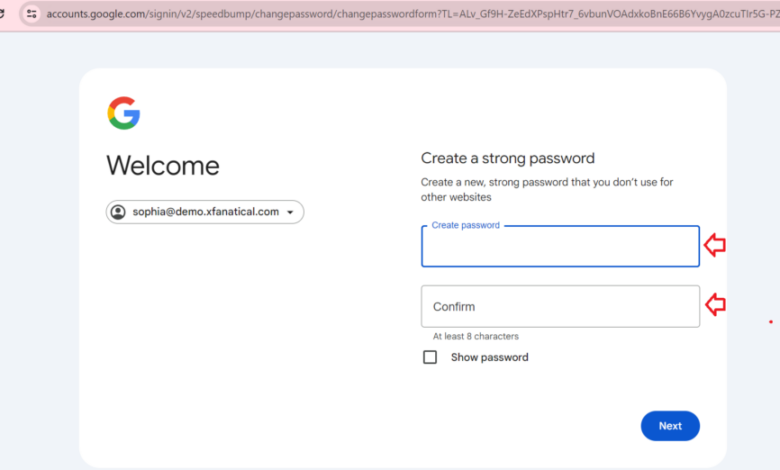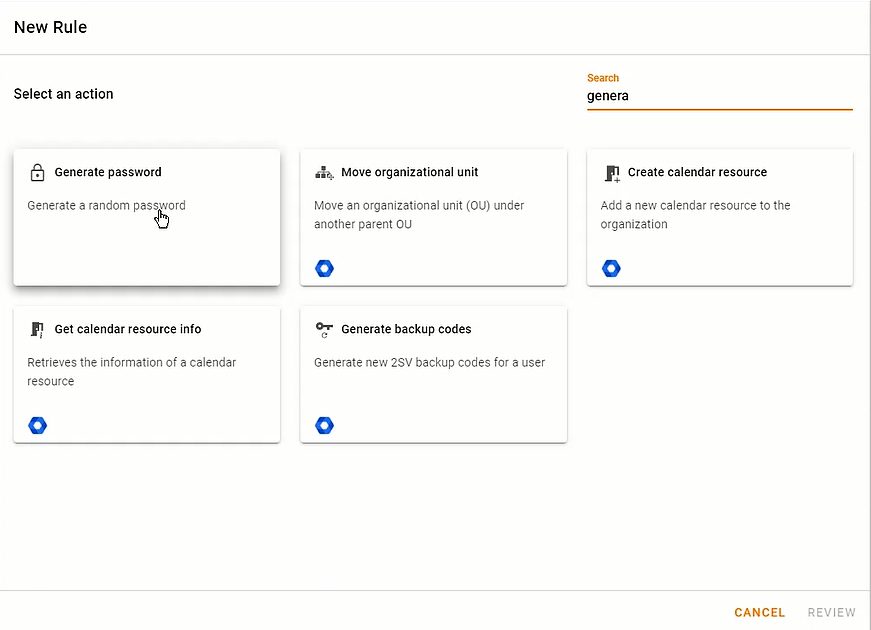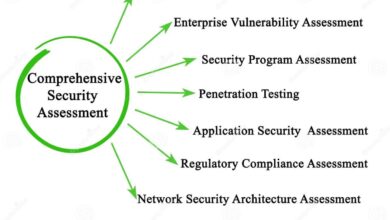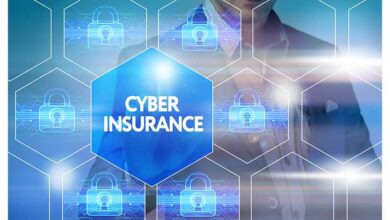
G Suite Passwords Stored in Plain Text for 14 Years
G Suite passwords stored in plain text for 14 years? That’s a headline that sent shivers down my spine when I first heard it. Imagine the sheer scale of potential damage – years of vulnerable accounts, the possibility of widespread identity theft, and the erosion of trust in a platform millions rely on. This wasn’t just a minor oversight; it’s a massive security blunder with far-reaching consequences.
Let’s dive into the details and explore what went wrong, who’s responsible, and what we can learn from this alarming situation.
This post will unpack the timeline of this shocking vulnerability, analyze the technical flaws that allowed it to persist for so long, and examine the legal and regulatory implications. We’ll also explore the impact on users, discuss mitigation strategies, and ultimately, learn from this experience to improve our own cybersecurity practices. Get ready – it’s a deep dive into a critical security failure.
The Security Breach
The revelation that Google stored G Suite passwords in plain text for fourteen years represents a significant security lapse with potentially far-reaching consequences. This extended period of vulnerability allowed for a considerable window of opportunity for malicious actors to gain unauthorized access to user accounts and sensitive information. The implications are serious, raising questions about data security practices and the trust placed in major technology providers.
The Timeline and Scope of the Vulnerability
The vulnerability spanned a remarkable fourteen years, a period during which G Suite, and the broader technological landscape, underwent significant changes. Early in this timeframe, security protocols and best practices were less sophisticated than they are today. The transition from less secure methods to modern encryption techniques likely occurred gradually, leaving a considerable gap where passwords remained unprotected.
This extended period significantly amplified the potential damage, as the number of users and the sensitivity of the data stored within G Suite accounts increased dramatically over time. Storing passwords in plain text exposes them to a multitude of threats, including insider attacks, SQL injection vulnerabilities, and sophisticated phishing campaigns. A successful breach could have led to identity theft, account hijacking, and the compromise of sensitive business and personal data.
Potential Impact of Storing Passwords in Plain Text
Storing passwords in plain text presents a catastrophic security risk. If a hacker gains access to the database containing these passwords, they have immediate and unrestricted access to all affected accounts. This differs significantly from storing passwords using secure hashing algorithms, where even if the database is compromised, recovering the original passwords is computationally infeasible. The consequences extend beyond simple account takeovers.
Compromised accounts can be used to launch further attacks, such as spear-phishing campaigns or distributing malware. The potential for financial loss, reputational damage, and legal repercussions is substantial.
Timeline of Discovery and Remediation
Precise details regarding the discovery and remediation timeline are limited in publicly available information. However, it’s reasonable to assume that the vulnerability was discovered internally through routine security audits or external penetration testing. The remediation process likely involved migrating to a more secure password storage mechanism, implementing multi-factor authentication, and potentially notifying affected users. The lack of precise dates emphasizes the importance of proactive security measures and transparent communication with users about potential vulnerabilities.
Comparison with Other Notable Data Breaches, G suite passwords stored in plain text for 14 years
The severity of this vulnerability can be better understood by comparing it to other significant data breaches. While the exact number of affected users remains undisclosed, the potential impact is considerable, given the length of the vulnerability.
| Timeline | Affected Users | Data Breached | Impact |
|---|---|---|---|
| Equifax (2017) | 147 million | Personal information, including Social Security numbers | Identity theft, financial losses, reputational damage |
| Yahoo! (2013, 2014) | 3 billion | Usernames, passwords, security questions | Account takeovers, phishing attacks, identity theft |
| G Suite (Unspecified) | Unknown | Plaintext passwords | Potential for widespread account compromise, identity theft, data breaches |
| LinkedIn (2012) | 117 million | Email addresses, passwords | Account takeovers, spam, phishing attacks |
Technical Analysis of the Vulnerability: G Suite Passwords Stored In Plain Text For 14 Years
The revelation that G Suite passwords were stored in plain text for fourteen years is a stark reminder of the devastating consequences of inadequate security practices. This breach wasn’t a result of a single, complex exploit, but rather a confluence of factors, each contributing to a system-wide vulnerability that persisted for far too long. Understanding the technical mechanisms behind this failure is crucial to preventing similar incidents in the future.The primary technical flaw was the storage of passwords in an unencrypted format.
The news about G Suite passwords stored in plain text for 14 years is a seriously scary wake-up call! It highlights the critical need for robust cloud security, which is why understanding solutions like those discussed in this article on bitglass and the rise of cloud security posture management is so important. This kind of vulnerability underscores the urgent need for better security practices across all cloud platforms, especially given the sheer scale of data breaches these days.
This means that anyone with access to the database containing user credentials could readily read them without needing to crack any encryption. This is a fundamental security error, representing a complete lack of basic password protection. The implications are severe; any unauthorized access to the database grants immediate and complete access to all user accounts.
Outdated Software and Inadequate Security Practices
The persistence of this vulnerability over fourteen years strongly suggests a combination of outdated software and inadequate security practices. Outdated systems often lack the latest security patches and features, making them more susceptible to exploitation. Additionally, a lack of regular security audits and penetration testing would have failed to identify this glaring weakness. A culture of neglecting security updates and best practices created an environment where this vulnerability could thrive.
The news about G Suite passwords stored in plain text for 14 years is a stark reminder of the importance of robust security practices. It makes you wonder about the security of other legacy systems, and how much better things could be with modern development approaches. For example, exploring the possibilities offered by domino app dev the low code and pro code future could lead to more secure and agile applications.
Ultimately, the G Suite revelation highlights the ongoing need for vigilance in protecting sensitive data, regardless of the platform.
Imagine a scenario where the software responsible for password management was never updated, leaving it vulnerable to known attacks and lacking modern security protocols.
System Architecture Vulnerabilities
The system’s architecture likely played a significant role. A poorly designed database schema, coupled with insufficient access controls, would have allowed unauthorized access to the password database. For example, if the database containing passwords lacked appropriate segregation of duties, a single employee with elevated privileges could have inadvertently or maliciously accessed the sensitive data. Furthermore, a lack of robust logging and monitoring mechanisms would have made it difficult to detect any unauthorized access attempts, even if they occurred.
The absence of multi-factor authentication (MFA) further exacerbated the situation, as even if an attacker compromised a single password, MFA would have prevented access to the associated account.
Methods of Exploitation
Exploiting this vulnerability was remarkably simple. Any individual with access to the database server, even through a simple SQL injection vulnerability, could have extracted the entire password database. Internal threats posed a significant risk. A disgruntled employee, or even a malicious insider, could have easily obtained the passwords and used them to gain access to numerous accounts. Similarly, a successful external attack that compromised the database server would have yielded immediate access to all plain-text passwords.
No sophisticated hacking techniques were necessary; the vulnerability was inherent in the system’s design and lack of fundamental security measures.
Legal and Regulatory Implications

The revelation that Google stored G Suite passwords in plain text for fourteen years presents a significant legal and regulatory minefield. This breach exposes Google to potential liability under various data privacy laws worldwide, and raises serious questions about user trust and corporate responsibility. The sheer duration of the vulnerability exacerbates the potential damage, as the affected data could have been compromised over a considerable period.The legal ramifications are multifaceted and depend on several factors, including the jurisdiction of the affected users and the specific laws applicable.
We’ll examine some key aspects and potential legal avenues available to those affected.
Applicable Data Privacy Regulations
The breach directly impacts several key data privacy regulations. The General Data Protection Regulation (GDPR) in the European Union, for example, mandates stringent data protection measures, including the requirement to process personal data lawfully, fairly, and transparently. Storing passwords in plain text clearly violates this principle. Similarly, the California Consumer Privacy Act (CCPA) in the United States grants California residents specific rights regarding their personal information, including the right to know what information is collected, the right to delete data, and the right to opt out of the sale of their personal information.
A failure to meet these standards could lead to significant penalties. Other state laws and international regulations could also apply, depending on the location of the affected users. The sheer scale of the potential global reach of this breach underscores the complexity of the legal landscape.
Potential Legal Actions Against Google
Individuals affected by the breach could pursue several legal actions against Google. Class-action lawsuits are a likely scenario, given the large number of potentially affected users. These lawsuits could allege negligence, breach of contract (depending on the terms of service), and violations of data privacy laws. The potential damages could include compensation for financial losses, emotional distress, and legal fees.
Furthermore, regulatory bodies could initiate investigations and impose substantial fines on Google for non-compliance with data protection regulations. The precedent set by similar breaches, such as the Yahoo! data breach, suggests significant financial penalties and reputational damage are highly possible. For instance, the Equifax breach resulted in multi-million dollar settlements and significant regulatory fines.
Impact on User Trust and Reputational Damage
The impact on user trust is potentially devastating. The long duration of the vulnerability and the sensitive nature of the compromised data (passwords granting access to potentially sensitive corporate and personal data) severely erode confidence in Google’s security practices. This breach could significantly impact Google’s reputation, potentially leading to a loss of customers and business opportunities. The reputational damage extends beyond immediate financial losses; it affects Google’s overall brand image and its ability to attract and retain talent.
Rebuilding trust after such a significant breach requires significant investment in improved security measures and transparent communication with affected users. It will require more than just a simple apology; concrete actions and demonstrable improvements in security infrastructure are essential.
Hypothetical Legal Strategy for a Plaintiff
A plaintiff in a lawsuit against Google could build their case around several key arguments. First, they would demonstrate that Google had a duty of care to protect their password data. Second, they would show that Google breached this duty by storing passwords in plain text for an extended period, demonstrating negligence. Third, they would prove that this negligence directly caused them harm, such as identity theft, financial loss, or emotional distress.
Finally, they would quantify their damages and seek compensation accordingly. Expert testimony from security professionals could be crucial in establishing Google’s negligence and the potential harm caused by the breach. The plaintiff’s legal team would likely cite relevant data privacy regulations and case law to strengthen their arguments and demonstrate the severity of the violation. A successful class-action lawsuit could set a significant legal precedent and impact future data security practices.
Impact on Users and Mitigation Strategies
The revelation that Google stored G Suite passwords in plain text for fourteen years is a deeply concerning security lapse with potentially devastating consequences for millions of users. The sheer length of time this vulnerability existed significantly amplifies the risk, leaving a vast window of opportunity for malicious actors to exploit the weakness and compromise user accounts. This section explores the potential impact on affected users and examines mitigation strategies that could have been implemented to prevent or minimize the damage.The potential impact on users whose passwords were stored in plain text is substantial and multifaceted.
Identity theft is a primary concern. With access to passwords, attackers could gain unauthorized access to numerous online accounts, including email, banking, social media, and other sensitive services. This could lead to financial loss through fraudulent transactions, account takeovers, and the theft of personal information used for identity fraud. Beyond financial losses, the emotional distress and inconvenience associated with recovering compromised accounts and repairing damaged reputations can be significant.
The breach also raises concerns about data privacy, as attackers could potentially access sensitive personal and professional information stored within the compromised accounts.
Potential Impacts on Users
The consequences of this data breach extend beyond simple account takeovers. Attackers could leverage access to these accounts for various malicious activities, including phishing campaigns, spear-phishing attacks targeting specific individuals or organizations, and the spread of malware. The long-term implications could involve reputational damage for both individuals and organizations using G Suite, loss of trust in Google services, and legal repercussions for Google due to non-compliance with data protection regulations.
For instance, an attacker gaining access to a company’s G Suite account could steal sensitive business information, intellectual property, or client data, leading to significant financial losses and legal battles.
Mitigation Strategies: Google’s Role
Google could have implemented several strategies to prevent or lessen the impact of this vulnerability. Firstly, employing robust password hashing techniques, such as bcrypt or Argon2, would have rendered the passwords unreadable even if the database were compromised. Secondly, implementing multi-factor authentication (MFA) would have significantly increased the security of user accounts, even if passwords were compromised. Thirdly, regularly auditing and updating security protocols is crucial.
Finally, proactive vulnerability scanning and penetration testing could have identified and addressed this flaw much earlier. The lack of these security measures demonstrates a significant failure in Google’s responsibility to protect user data.
Mitigation Strategies: User Actions
Users should take immediate steps to protect themselves following this breach.
- Change all passwords associated with accounts that may have been compromised, including email, banking, and social media accounts.
- Enable two-factor authentication (2FA) wherever possible.
- Monitor bank accounts and credit reports for suspicious activity.
- Review privacy settings on all online accounts and limit the amount of personal information shared.
- Report any suspicious activity to the relevant authorities and service providers.
Best Practices for Password Security and Data Protection
Protecting oneself from future breaches requires adopting strong security practices.
Seriously, Google storing G Suite passwords in plain text for 14 years? That’s a massive security fail! It makes you wonder about other tech giants’ practices; for example, I recently read about facebook asking bank account info and card transactions of users , which is equally alarming. The whole thing highlights how crucial it is to be vigilant about where we store our sensitive information, especially given the G Suite password debacle.
- Use strong, unique passwords for each online account. A strong password is long (at least 12 characters), contains a mix of uppercase and lowercase letters, numbers, and symbols, and is not easily guessable.
- Use a password manager to securely store and manage passwords.
- Enable two-factor authentication (2FA) on all important accounts.
- Regularly update software and operating systems to patch security vulnerabilities.
- Be wary of phishing emails and suspicious links.
- Educate yourself about common online threats and scams.
- Regularly review your online privacy settings and limit the amount of personal information shared online.
Lessons Learned and Future Prevention

The revelation that G Suite passwords were stored in plain text for fourteen years is a stark reminder of the devastating consequences of neglecting fundamental cybersecurity best practices. This incident underscores the critical need for a proactive, multi-layered approach to data security, extending beyond simple password management to encompass robust encryption, regular security audits, and employee training. The sheer longevity of this vulnerability highlights a systemic failure in security oversight and a lack of awareness regarding the gravity of storing sensitive information in an unencrypted format.This incident serves as a powerful case study in the importance of robust password management and data encryption.
The lack of encryption, combined with the plain text storage of passwords, created an environment ripe for exploitation. Even a relatively simple breach could have yielded devastating results, granting attackers access to a vast amount of sensitive user data. The prolonged duration of this vulnerability further amplified the potential damage, allowing attackers ample opportunity to compromise accounts and potentially inflict significant harm.
This emphasizes the need for not only strong passwords but also the absolute necessity of employing encryption at every stage of data handling.
Improved Password Management and Encryption Strategies
Implementing strong password policies is only one piece of the puzzle. Multi-factor authentication (MFA) should be mandatory for all accounts, adding an extra layer of security beyond simple passwords. This could involve requiring users to provide a one-time code from a mobile app or security key in addition to their password. Furthermore, the adoption of robust password hashing algorithms, such as bcrypt or Argon2, is crucial.
These algorithms are designed to be computationally expensive, making it significantly more difficult for attackers to crack passwords even if they gain access to the hashed data. Crucially, all data at rest and in transit must be encrypted using strong, industry-standard encryption algorithms like AES-256. Regular key rotation is also essential to mitigate the risk of long-term compromise.
Enhanced Security Protocols and Technologies
This incident highlights the need for a more comprehensive security posture, extending beyond individual components to encompass the entire system. Regular security audits and penetration testing should be conducted to identify vulnerabilities before malicious actors can exploit them. These audits should not only focus on technical aspects but also on organizational processes and employee awareness. Implementing a robust intrusion detection and prevention system (IDS/IPS) can provide early warning of suspicious activity and help to contain potential breaches.
Moreover, adopting a zero-trust security model, which assumes no implicit trust within the network, can significantly reduce the attack surface. This approach would involve verifying every user and device attempting to access resources, regardless of their location or network segment.
Recommendations for Enhancing Data Security Measures
This incident provides a valuable learning opportunity for organizations to bolster their security posture. Here’s a list of recommendations:
- Implement and enforce strong password policies, including password complexity requirements, regular password changes, and password managers.
- Mandate multi-factor authentication (MFA) for all accounts.
- Encrypt all data at rest and in transit using strong encryption algorithms.
- Regularly conduct security audits and penetration testing to identify and address vulnerabilities.
- Implement and maintain a robust intrusion detection and prevention system (IDS/IPS).
- Adopt a zero-trust security model.
- Invest in employee security awareness training to educate staff on best practices and potential threats.
- Establish clear incident response plans to effectively manage and mitigate security incidents.
- Regularly update and patch software and systems to address known vulnerabilities.
- Implement data loss prevention (DLP) measures to prevent sensitive data from leaving the organization’s control.
Concluding Remarks
The revelation that G Suite passwords were stored in plain text for 14 years is a stark reminder of the ever-present threat of cybersecurity vulnerabilities. This wasn’t a simple mistake; it highlights systemic weaknesses in security protocols and underscores the critical need for robust password management, data encryption, and regular security audits. While Google has likely addressed the immediate issue, the long-term consequences, including the erosion of user trust and potential legal repercussions, will undoubtedly linger.
This incident should serve as a wake-up call for both corporations and individuals to prioritize cybersecurity and implement best practices to protect sensitive data.
Essential FAQs
What specific G Suite services were affected by this vulnerability?
The exact services affected haven’t been publicly disclosed in detail. More information is needed to determine the full scope.
Did Google notify affected users?
This depends on the timeline of discovery and remediation. Further information is needed to answer this question definitively. If affected, users should check their Google account activity and security settings.
What compensation, if any, are affected users entitled to?
The potential for legal action and compensation will depend on the specifics of the breach, applicable laws (like GDPR or CCPA), and the extent of any damages suffered by users. Legal counsel would be necessary to determine entitlement.
How can I check if my G Suite account was compromised?
Review your Google account’s security settings, check for any suspicious activity, and change your password immediately. Consider enabling two-factor authentication.





